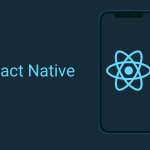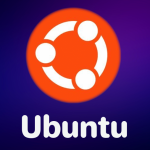Introduction
In the world of computing, few names have had as profound an impact as Linux. Known for its stability, security, and open-source nature, Linux powers everything from smartphones and web servers to supercomputers and IoT devices. Whether you are a developer, student, or technology enthusiast, understanding Linux can open new doors in programming, cybersecurity, and system administration.
Unlike Windows or macOS, Linux gives users complete control over their system. It is free, flexible, and community-driven making it one of the most powerful tools in modern computing.
Table of Contents
What is Linux?
Linux is an open-source operating system (OS) based on the Unix architecture. Created by Linus Torvalds in 1991, it has evolved into a global phenomenon used by millions worldwide. At its core, it manages hardware resources, runs programs, and provides a user interface for system operations.
Unlike proprietary systems, it’s source code is publicly available, allowing anyone to view, modify, and distribute it. This transparency has fostered a massive community of developers and contributors, constantly improving its performance and security.
If you want to explore more about the Linux kernel and its evolution, you can visit The Linux Foundation.
Key Features of Linux
1. Open Source and Free to Use
It is open-source, meaning anyone can download and use it without licensing costs. This makes it ideal for learners, startups, and enterprise systems alike.
2. High Security
It is widely respected for its robust security architecture. Most malware and viruses target Windows systems, leaving it comparatively safer. With features like user privilege separation and open-source code reviews, vulnerabilities are quickly detected and patched.
3. Stability and Performance
Linux systems can run for years without needing a reboot. That’s why major companies, including Google, NASA, and Amazon Web Services (AWS), use its servers to power critical infrastructure.
4. Customization
Unlike other operating systems, it can be tailored to your exact needs. You can change the desktop environment, themes, command shell, and even the system kernel.
5. Lightweight and Efficient
It runs smoothly even on older hardware, making it perfect for repurposing old computers into functional machines.
Popular Distributions
Because it is open-source, many versions of it exist, called distributions (distros). Each is designed for specific purposes and user preferences.
- Ubuntu: Ideal for beginners due to its simplicity and strong community support. Learn more at Ubuntu Official.
- Fedora: Known for innovation and cutting-edge features, often used by developers.
- Debian: The foundation for many other distros like Ubuntu, focused on stability.
- Arch Linux: Offers complete control and customization for advanced users.
- Kali Linux: A cybersecurity-focused distro used by ethical hackers and penetration testers.
Linux in Everyday Life
You might not realize it, but it is everywhere. The Android OS, which powers most smartphones, is built on the Linux kernel. Servers hosting websites like Facebook, YouTube, and Wikipedia also run on it.
Supercomputers, space exploration systems, and even car entertainment units rely on Linux-based architectures for performance and reliability. This shows how deeply embedded it is in our digital ecosystem.
Basic Commands for Beginners
Learning it begins with mastering its command-line interface (CLI). Here are a few essential commands:
- ls: Lists files and directories
- cd: Changes the current directory
- mkdir: Creates a new folder
- rm: Deletes files or directories
- sudo: Runs a command with administrative privileges
Practicing these commands is the best way to understand how it operates beneath the surface.
Why Developers and Companies Prefer it
Tech giants and software engineers prefer it for multiple reasons.
- Security: Since it has fewer vulnerabilities, it’s the go-to choice for servers and critical systems.
- Performance: it consumes fewer system resources, providing faster and more stable environments.
- Scalability: It’s suitable for everything from personal laptops to enterprise cloud servers.
- Development Tools: It supports powerful programming environments such as Python, C++, and Rust.
How to Get Started
You can start learning it easily by installing it alongside Windows or using a virtual machine.
- Download a beginner-friendly distro like Ubuntu or Linux Mint.
- Use tools like VirtualBox or VMware to install it without affecting your main system.
- Explore the terminal for commands, file management, and package installations.
Conclusion
Linux is more than an operating system it’s a symbol of freedom, collaboration, and innovation. From powering the world’s servers to enabling space exploration, it continues to shape the future of technology.
Whether you’re a beginner exploring the basics or a professional developer seeking flexibility, it offers endless opportunities to learn and build. By understanding how it works and embracing its open-source philosophy, you can join one of the most passionate and forward-thinking tech communities in the world.
Also Check Rust Programming – Future of Safe & Fast Development – 2025







1 thought on “Linux – Understanding Power of Ultimate Fast OS – 2025”